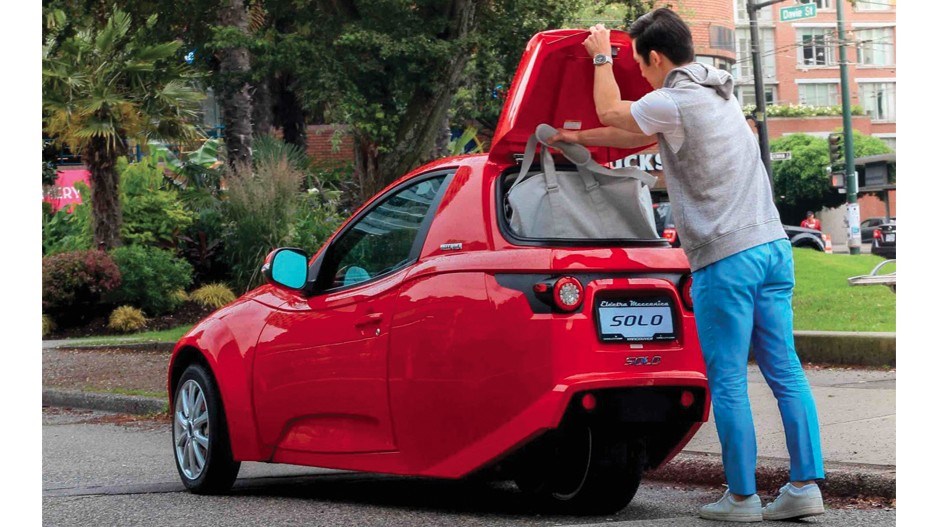Efforts to reduce air pollution got a jump-start this month from U.S. President Joe Biden when he signed an executive order calling for zero-emissions vehicles (ZEVs) to make up half of new cars and trucks sold stateside by 2030.
America’s efforts may spur growth among B.C.-based companies specializing in electric vehicles (EVs), while one expert says it may also force the province to shift its own goalposts for getting more EVs onto B.C. roads.
Passed in 2019, B.C.’s ZEV Act set the target for requiring all new light-duty cars and trucks sold in the province to be emissions-free by 2040.
And while the Americans aim to have ZEVs making up 50% of new vehicle sales by 2030, B.C.’s 2019 legislation aims for just 30% by that same year. Ottawa’s newest targets, announced in June, call for ZEVs to represent 100% of new vehicle sales by 2035.
“I’m not sure the federal government has realized or has processed that, that would be a 70% requirement [by 2030],” said EV expert Matthew Klippenstein, a regional manager with the Canadian Hydrogen and Fuel Cell Association (CHFCA).
“B.C. will always want to be at least as ambitious as Canada. Our goal had been 2040, and I’m sure it will be revised to 2035.”
Meanwhile, the new U.S. targets require a significant ramp-up in ZEV manufacturing south of the border – something that could help EV companies in B.C.
Following a 14-month search, Vancouver-based ElectraMeccanica Vehicles Corp. (Nasdaq:SOLO) revealed earlier this year it had selected Mesa, Arizona, as its home base for manufacturing in North America.
The EV maker, best known for its distinctive three-wheeled, single-passenger Solo vehicle, already has one manufacturing facility in China.
About 200 workers will initially carry out light assembly when the 235,000-square-foot facility opens in 2022.
ElectraMeccanica president and CEO Paul Rivera said in an email to BIV he was encouraged by the U.S. policies.
“Not only how these will help boost sales of our single-seat flagship Solo electric vehicle but other EV manufacturers as well,” he said. “Many countries are now adopting more aggressive legislation to phase out the use of fossil fuels and the vehicles that run on them. We believe that these trends in many states, particularly California, will be followed throughout the U.S. and ultimately Canada as well. This is good news for an EV industry that’s already dynamic and evolving.”
Electric-motorcycle maker Damon Motors Inc. landed US$30 million in investor capital earlier this year and is stepping closer to opening a manufacturing facility in Surrey that could produce up to 50,000 vehicles annually.
Its 12,000-square-foot headquarters sits on Vancouver’s Powell Street, and CEO Jay Giraud said it’s imperative to have the future manufacturing facility close to its R&D centre.
“Damon Motors has seen tremendous adoption of over $35 million in pre-orders, confirming strong demand for two-wheel electric vehicles,” Giraud said in an email. “We are excited to see Biden’s recent executive order to encourage increased EV adoption and anticipate we will see the same support in the upcoming Canadian election.”
While the accelerating adoption of passenger ZEVs will help reduce emissions, heavy-duty vehicles (HDVs) don’t face similar mandates on a national level.
This year’s Canadian National Inventory Report to the United Nations showed diesel HDVs emitted 7.32 million tonnes of CO2, while gasoline HDVs accounted for 1.97 million tonnes of CO2.
That total of 9.29 million tonnes of CO2 is about equal to the 3.78 million tonnes of CO2 from passenger cars and 5.6 million tonnes from passenger trucks.
California – the largest vehicle market among jurisdictions in Canada and the U.S. – has served as a lodestar for manufacturers in terms of mandating lower emissions coming from vehicles sold in the state, as Rivera alluded to.
If vehicle manufacturers, which ship across North America, don’t fall in step with California, then their new vehicles can’t be sold in the most populous state in the U.S.
Last year, California passed new state legislation aimed at weaning medium-duty trucks from diesel.
“One thing we’d like to see in British Columbia and in Canada, if I may put my hydrogen-fuel-cells hat on, is a similar zero-emission vehicle mandate,” said Klippenstein.
“That will induce the demand for the zero-emission vehicle technologies for which hydrogen and fuel cells are an excellent fit.”
That could also boost B.C. companies such as Ballard Power Systems (TSX: BLDP) and startup Hydra Energy Corp.
Hydra specializes in sourcing waste hydrogen from partners to capture the fuel and provide it to commercial semi-truck fleets at below-diesel costs.
The company installs hydrogen-diesel co-combustion conversion kits in trucks within a few days and, at no additional cost, installs fuelling stations on site for customers.
Hydra’s business model offers long-term fuel contracts at a fixed discount of 5% below diesel to attract customers that might be reluctant to convert their fleets from diesel to hydrogen over cost concerns.
With $15 million in hand from San Francisco-based investment firm Just Business, Hydra is now developing a waste-hydrogen capture plant in northeast B.C.
The location of the plant has not yet been disclosed, but Hydra is partnering with Chemtrade Logistics (TSX:CHE.UN) for its commercial deployment.
While the second big project will not be based in B.C., the company remains focused on the domestic market for now.
“It’s a different market in Europe, so we’d have to enter with a different business model,” CEO Jessica Verhagen told BIV.
“Hydrogen is already valued a lot higher, so there’s not really such a thing as waste hydrogen because it has the value on it already.” •




